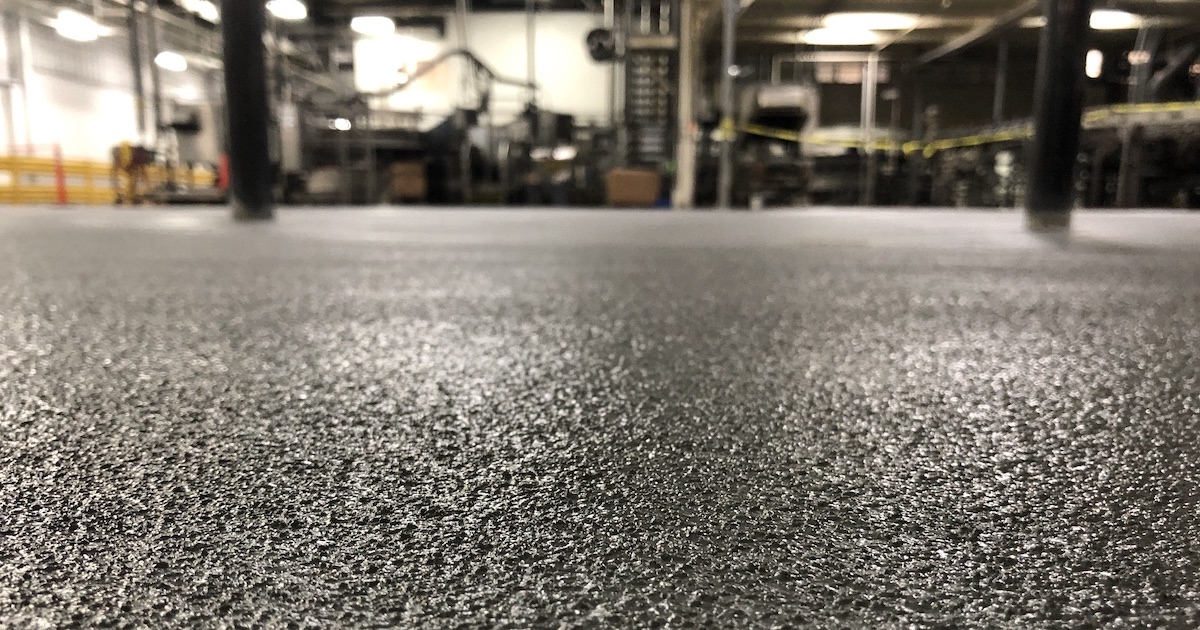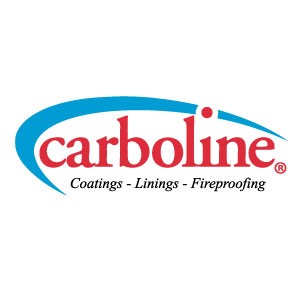
Although a new epoxy floor coating certainly won't stay in pristine condition forever, proper maintenance will extend its life and preserve its appearance over the long run. That said, not all floors require the same level of care. Because of the non-porous nature of coatings, a coated floor will require less maintenance than an uncoated concrete floor.
Maintenance frequency for your epoxy floor coating will depend on a variety of factors, including the work environment and how much dirt and soilage has accumulated. Dust and dirt are abrasive, while liquids can easily stain and damage the finish—ultimately decreasing your floor coating's life in the process. The greater the accumulation of soilage and the harsher the environment, the more frequently your floor coating should be cleaned.
In order to maximize the life of a new flooring investment, you should develop a routine epoxy floor coating maintenance program. As you do so, consider these six tips to keep your floors in good condition:
1. Sweep your floors daily
Sweep your floors daily with a broom or mechanized cleaning equipment in order to prevent dust and dirt from accumulating. If using a mechanized sweeper, be sure to use a soft bristle brush. Stiff brushes may scratch the floor coating, causing a loss of gloss. Another best practice is to place mats near any entryways in order to minimize dirt and moisture accumulation.
2. Give your epoxy floor coating a good scrub weekly
Scrubbing frequency ultimately depends on the amount and type of soilage that typically plagues your epoxy floor coating. However, it is best to scrub all floors at least once a week, and high-traffic areas daily, using the proper brush and detergent. Areas in which oil and grease are prevalent will also require daily attention. Be sure to use a mop and bucket or, for greater productivity, a mechanized scrubber.
3. Clean up spills immediately
Clean up all liquid spills immediately, before they have a chance to damage the floor finish or cause a safety hazard. Additionally, the longer that harsh liquids such as caustics, acids and solvents remain on a floor, the more likely they will soften, discolor or remove a coating/sealer altogether. If chemicals are prevalent in the area, be sure to consult the coating manufacturer for a guide to the chemical resistance properties of the floor coating.
4. Repair any scratches and gouges to the floor coating
It’s also critical to repair any large gouges or scratches to the floor coating as soon as possible. Avoid scraping, sliding or dropping heavy machinery, pallets or sharp objects across the floor without proper protection, as this can cause deep cuts and gouges. These damaged areas allow moisture to seep under the coating and can result in peeling. Additionally, avoid using stiff bristle brushes and caustic cleaning solutions on your floors.
In order to repair damaged areas in your floor coating, follow these steps:
- Clean the area of any grease, oil and soilage using TSP detergent
- Sand the scratches/gouges by hand using 100-grit sandpaper, then feather the edges until smooth
- Rinse the floor thoroughly and allow it to dry fully
- Repair the damaged area using the original coating material, per the instructions
5. Stay on top of Stain prevention and removal
If stains occur on your epoxy floor coating, begin your removal process with a mild solution and move on to more powerful removers until the stain disappears. Always be sure to wear rubber gloves and proper eye protection when working with any chemicals.
Grease and oil stains:
Grease and oil may stain your floor coating, particularly if these substances remain on the floor for more than 24 hours. When a spill occurs, it’s important to promptly scrub the area with TSP and follow the instructions on the detergent labels.
Dried spills and stubborn stains:
If you don't catch a spill in time and it dries in place, it may end up leaving film or a difficult-to-remove stain on your floor coating. To alleviate this, use a plastic tool to remove any residue, taking care not to scratch the coating. Then, wet a clean cloth with an ammonia household cleaner and wipe down the stained area.
6. Remove any rubber burns from the floor coating
Forklift and other vehicle tires can often leave rubber burns in the floor coating. In order to remove these rubber burns, follow the steps below:
- Spot the stained area with a citric acid cleaner, then agitate it with a stiff brush or mechanical scrubber (NOTE: Dispose of waste in a sanitary sewer or per local regulations—never in storm sewers. Be sure to follow all label directions carefully.)
- Add TSP or detergent and water to form an emulsion
- Scrub the floor coating thoroughly
- Rinse thoroughly with water
By establishing a routine epoxy floor coating maintenance program, you will not only minimize scratching from abrasive dust and limit soilage buildup, but ultimately extend the life and appearance of your floor for many years to come.

